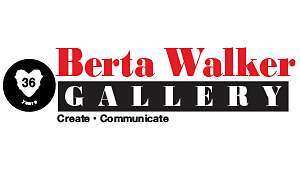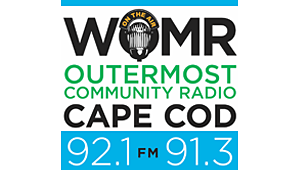HISTORIC ORGAN
restored & renovated by
Stephen J. Russell & Co., 2001

The Unitarian Universalist Meeting House of Provincetown is fortunate to have a fully functioning historic 1850 Edwin Holbrook organ, restored and renovated by Stephen J. Russell & Co. in 2001.
Notes and specifications from the restoration and renovation.
Two manuals and a pedal.
Wind pressure: 2 ¾”
Pitch: A=440 at 72 degrees
II/18
GREAT. 56 note compass (bottom manual).
Diapason 8′, big and bright.
Melodia 8 and stopped flute bass, a little
louder and cleaner than before, otherwise very sweet for a Melodia.
Dulciana 8 tf, soft and typical, use with
flute bass.
Viola 8 tf, medium strength string –
gemshorn tone, use with flute bass.
Flute 4’, small-scale Rohrflute, very
nice.
Principal 4′, normal scale and average
volume, somewhat bright tone.
Twelfth 2 2/3′, typical, a bit brighter
than before.
Fifteenth 2′, typical, perky.
Tierce 1 3/5, new addition, bright, matches
twelfth for English chamber organ sesquialtera tone.
SWELL. 56 note compass (labeled “Choir” for
couplers and stop names) (top manual)
Diapason 8′ tc, big and bright (same scale
as Great) but more distant due to placement; use with flute bass.
Rohrflute 8’, and flute bass (1-12). A nice
rohrflute for the period.
Dulciana 8, a fairly big string (for the
period), a nice balance to the Great Viola.
Principal 4’, somewhat narrow scale,
bright; works well with either Gt 8′.
Twelfth 2 2/3, very narrow in the bass but
normal in the treble; somewhat bright, stringy voicing.
Fifteenth, same description as Twelfth.
Oboe 8′, The only reed in the organ; much
better than before; re-worked by Dave Broome.
Tremulant, historic construction after Dom Bedos (a
Holbrook original!); speed and depth varies with demand.
PEDAL. 27 note compass (originally 18).
Position Middle C manual over Tenor C pedal (typical older tracker).
Flat, not radiating, Pedal keyboard.
Open Wood. 16 A wind hog; don’t hold double
pedal with full organ and fistfuls of notes for a long time or it
might run out of wind.
SubBass. 16 added Steere pipes medium
volume.
Bourdon. 8 extension of Subbass by
transmission of wind; low cut and slightly articulate.
Balanced Swell pedal in normal location, over E-F in pedal tenor
octave.
Pedal keyboard placed in a position typical of AGO 2 manual consoles.
Fairly comfortable to play. No sense of falling off the bench.
Pitch is a t A=440 at 72 degrees.
Ted Gilbert performed most of the re-voicing & regulation. The organ retains a typical early American tonal quality, though somewhat brighter than the later 19th century work we are accustomed to hearing. The key action is very comfortable for an old tracker without couplers. With Swell to Great engaged, it does take a bit of work to play. The action is the same as the original Holbrook.
Key aspects of the historically sensitive renovation in 2001:
- Expansion of the pedal keyboard, Subbass rank from 18 to 27 pipes, and a new (flat) pedalboard (formerly had an unusual short-octave arrangement).
- Expansion of seven Swell ranks from a 44- to 56-note compass.
- Replacement of Great Keraulophon 8′ with Tierce 1 3/5′.
- Addition of a soft Bourdon 16′ and 8′ stop in the Pedal division.
- Complete structural refurbishing of the instrument, with extensive wood grain (structural) strategy improvement.
- A new Zephyr blower replaced an aging and noisy Spencer unit.
- Case was unaltered, butfacade pipes (all speaking) were repainted in typical gold paint.
- Restoration was historically sensitive. All additions were done so as not to substantially disturb any of the original mechanism, just add to it. Two exceptions to this are modification of the Swell shade mechanism and the new pedal keyboard based on the type of keyboard used in subsequent instruments by Holbrook, Hook and Hastings, etc.
- Re-voicing: A study of the pipe work revealed problems typical on many old trackers. Languids had sagged making for poor pipe speech. Crushed pipe mouths from improper cone tuning, etc. Pipes had evidence that pipe toes were beaten closed well past the original setting (typical of “modernizations”) to soften the organ at a time when this was a popular thing to do. The 1850s were not days when organs were apologetic and Holbrook’s approach seemed to be very much a gutsy English chamber organ. No cut-ups were altered, just proper pipe speech and voicing restored. Swell tonal egress improved considerably after the second set of shades was removed.
- An additional Swell chest and enclosure were added and connected to the swell pedal (addition by others at the turn of the century when the organ was softened). Originally the organ had a hitch down expression pedal typical of English chamber organs.
- Tuning collars were fitted to prevent future damage by cone tuning. A Tierce was added to replace a Keraulophone (source unknown, seemingly not original to the organ).














